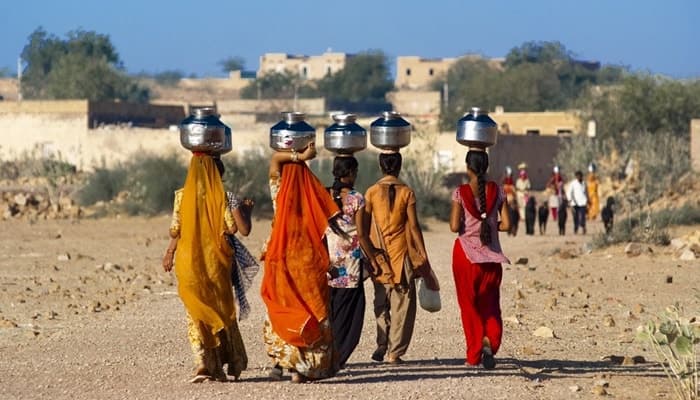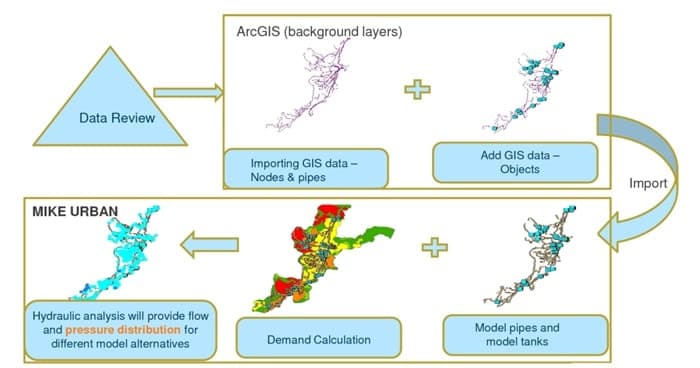Solution provider

DHI is a global digitally enabled advisory company innovating new ways to use, manage and live with water and protect water-related ecosystems.
Case
Water management
Non-revenue water


DHI is a global digitally enabled advisory company innovating new ways to use, manage and live with water and protect water-related ecosystems.
Add the case to your visit request and let us know that you are interested in visiting Denmark
Rajasthan is India’s largest state, covering an area of 342,000 km2 with a population of 56.5 million people (Census 2001). The Aravalli mountain range runs from the south-west of Rajasthan to the north-east. This has divided the state into two distinct geographical regions – the Thar Desert covering over 60% of the state’s land (which leaves Rajasthan acutely deficient in water supply) and the fertile eastern region. The distribution of Rajasthan’s urban centres is related to climatic conditions, water resources, and soil fertility. As such, the north-west region is sparsely populated compared to the eastern region. Historically, Rajasthan has some of the best planned cities and towns in India. However, rapid urban population growth over the last four decades has resulted in considerable degradation of these urban areas.
During the course of a study that we conducted in 222 Rajasthan towns, we observed that most of the junctions have inadequate pressure in the water distribution system. High head losses (excessive pressure drop – due to friction – as a fluid flows through a pipe) were noted due to the non-optimal design of the system in some areas. In others, water failed to reach consumers on account of low terminal pressure. As such, the water supply was intermittent and the efficiency of the system was compromised.
Water networks consist of pipes, junctions, pumps, valves, service reservoirs and so on. Asset database and management is the key to analysing any water supply system. As part of the benchmarking process for the water supply and distribution system in Rajasthan, we conducted a detailed study in 222 towns in the state. Our study was classified into four stages – model building, model calibration, optimisation and reporting. In the process, we dealt with an enormous database comprising assets, topography of the area, supply quantity and duration.
With MIKE URBAN (now MIKE+), we were capable of managing and analysing this data efficiently. The state-of-the-art water modelling software provided a detailed solution for complete integration of GIS and water modelling for Rajasthan’s water distribution network.
We offered to provide solutions to optimise Rajasthan’s water distribution network with the help of our knowledge and experience in water modelling. The existing simulated network was approximately matched with the measured field pressures in the model calibration process. We used MIKE URBAN+ (now MIKE+) to map the low pressure junctions and critical pipes of the network (known as the ‘hot spots’). We then carried out detailed analyses of these variables with adequate hydraulic simulations.
We proposed that new pipelines be laid parallel to the critical pipelines. New pipelines will be less rough and optimised in diameter, thereby reducing head losses in the system. These proposed parallel pipelines will increase the flow in the system and eventually the terminal pressure in the system as well. As per our assessments, creating loops in the network will also increase the terminal pressure in the system, in some instances.
Flowchart indicating the methodology for hydraulic analysis using MIKE URBAN (now MIKE+) for 222 towns and cities of Rajasthan

We faced a number of challenges when attempting to access the appropriate data for calibration. We were already dealing with a massive quantity of data and to add to it, there were several inconsistencies with the data obtained. It became necessary for us to track these irregularities to make sure that we were developing appropriate hydraulic models. We constantly checked the data for inconsistencies and suggested improvement measures. In the process, we completed nearly 3,000 models for the 222 towns in Rajasthan.
A planned benchmarking like this determines bottlenecks and critical assets in the system, thereby creating a roadmap for future investments. In the 222 towns that our study covered, the water supply is maintained by the Public Health Engineering Department of Rajasthan (PHED). The study provided an immediate solution to the challenges facing the demand-loaded water distribution network of Rajasthan. It also gave an estimate to the PHED about future improvement plans for water distribution networks. These could be applicable to other parts of Rajasthan as well as to other Indian states facing similar water distribution problems.